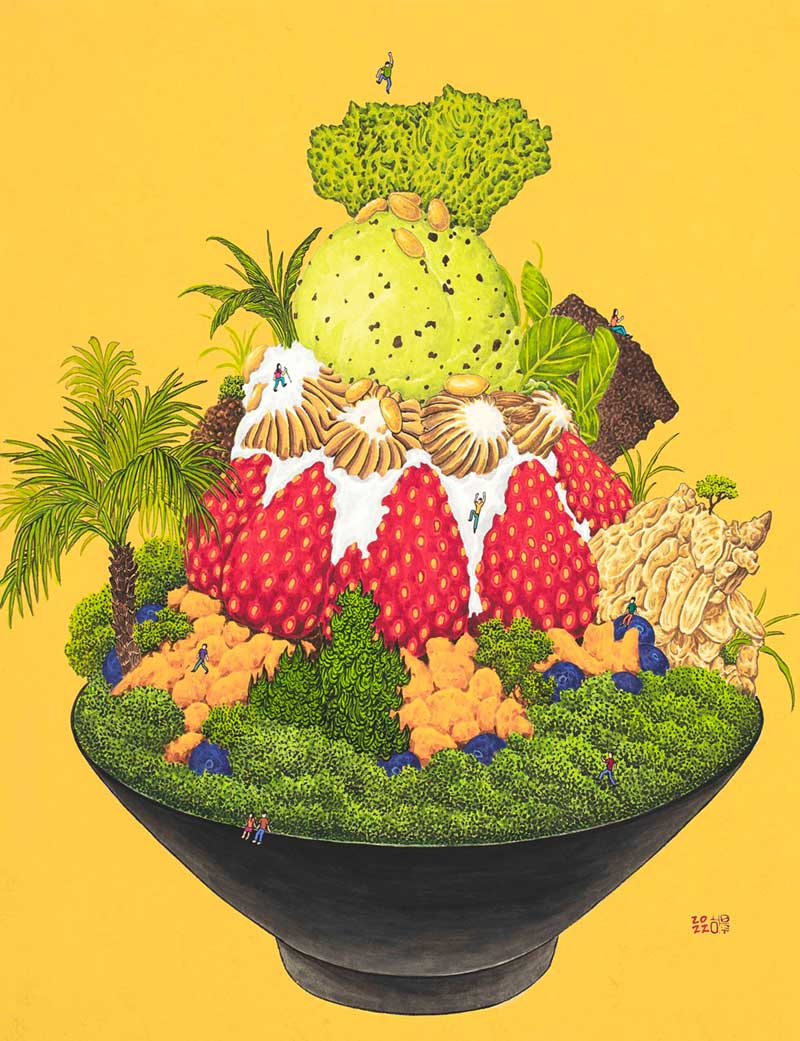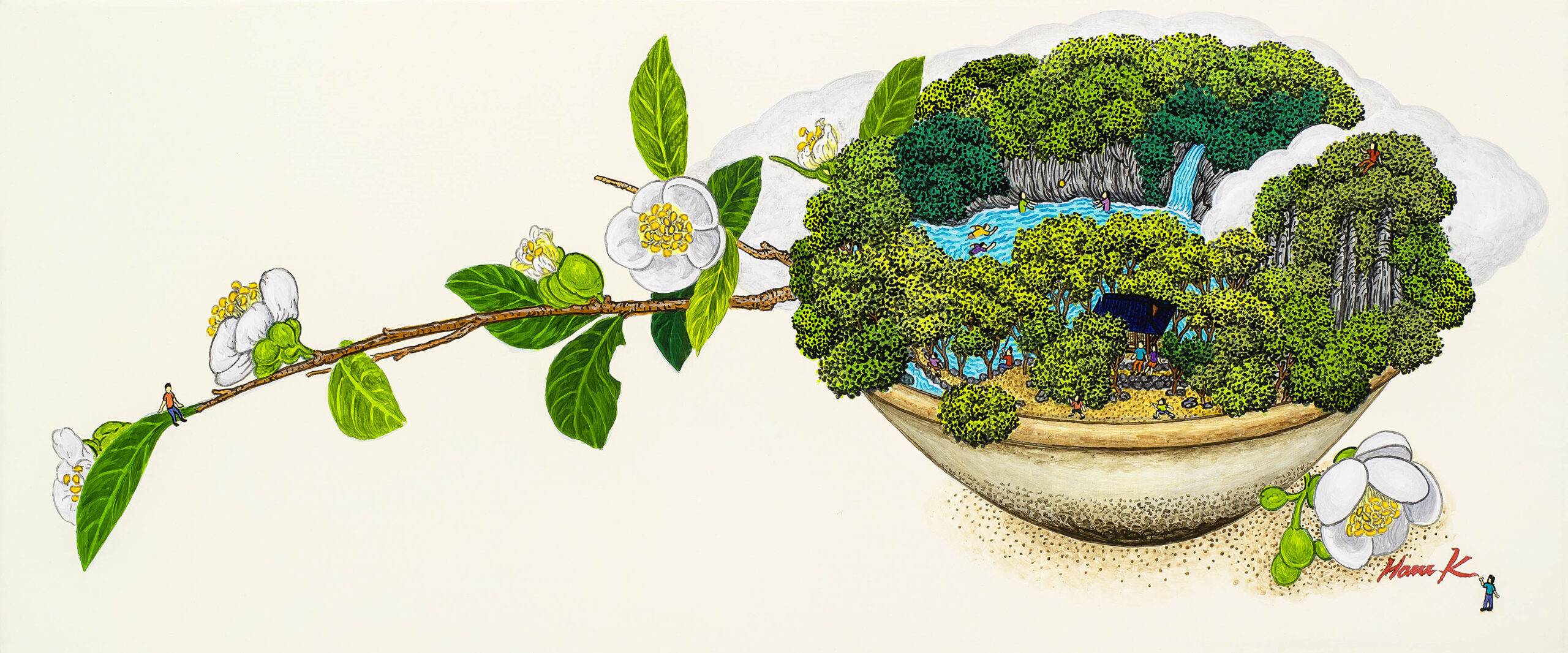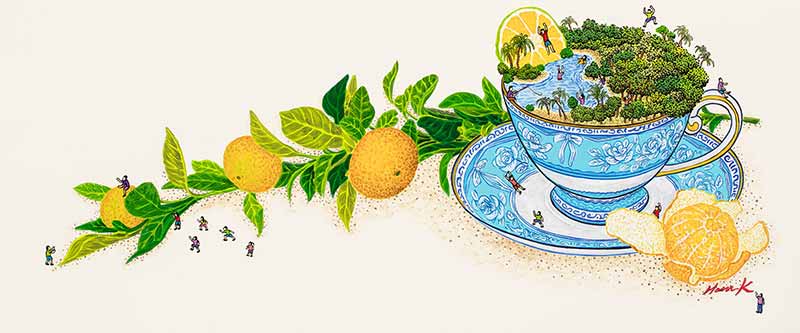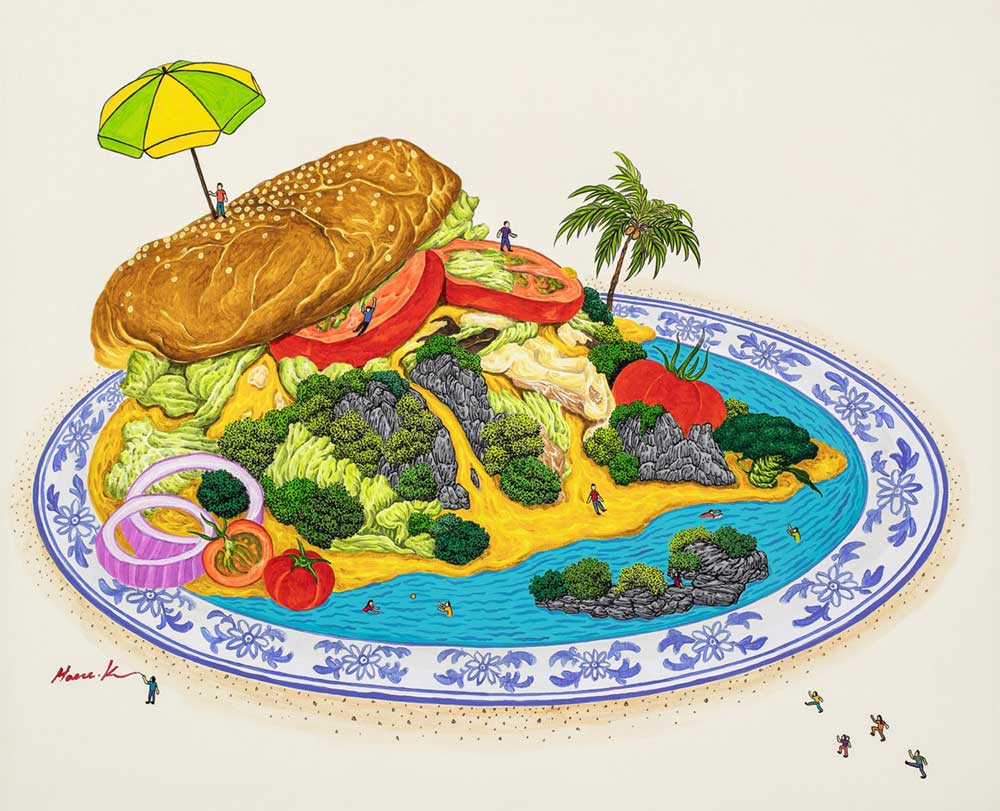Haru K
Korea/Gwangju
Born in Gwangju, South Korea in 1980, Haru K experienced the cultural shock caused by globalization after the 1988 Seoul Olympics. With the rapid influx of Western culture, the subjectivity of Korean culture was lost, and Haru, who grew up during that time, constantly pondered the relationship between his own subjectivity and the external environment. While studying at the Department of Fine Arts at Hongik University in Seoul, Haru observed the decline of traditional landscape painting and its outdatedness. Thus, he endeavored to clarify his own culture while contemplating how to break free from the traditional framework of landscape painting and paint landscapes that modern people can appreciate.
Haru believes that the "self" is the sum of both the physical and spiritual aspects, and he combines the act of "eating" to maintain physical survival with "art" to maintain spiritual liveliness, thereby showcasing his own subjectivity. He draws on traditional Eastern ink painting and attempts to incorporate the spiritual pursuit of traditional landscape painting into modern life. Haru's landscape paintings combine the "ideal world pursuit of traditional painting" and the "material that constitutes modern life." In his works, nature symbolizes the mind, while food symbolizes the body. Haru's works can be said to be a bridge connecting the spirit and the body, perfectly merging the two.
Haru cleverly combines traditional landscape painting with various gourmet dishes, creating works that are colorful, aromatic, and flavorful. He creates landscapes in bowls and dishes, transforming each dish into mountains, rivers, and plains, with carefree and miniaturized characters playing happily on the side. While the paintings evoke memories of the aroma and taste of various foods, viewers are sometimes like giants in Gulliver's Travels, observing the characters frolicking in the painting as bystanders, and sometimes enter the painting and join the miniatures, riding on a kimchi rocket, parachuting onto a seafood noodle bowl, following a tour group to see the hot and spicy rice cake volcano, climbing a strawberry ice mountain with all their might, watching in awe as the potato tornado swirls, swimming in a salad, and standing on a French baguette like a Western cowboy ready to duel.
Haru's creations are pure and joyful, and he possesses an imaginative mind that defies the common sense of the real world. His art combines tradition and modernity, spirit and material, ideals and reality, and the vastness of nature with the smallness of humanity. His works appeal to emotions, enhance perception, and create imaginations that surpass existing experiences. Looking at Haru's works is like enjoying a sumptuous Korean meal; he uses food and drink in daily life as his subject matter, sharing his sense of happiness and establishing an intimate relationship between art and the viewer.




